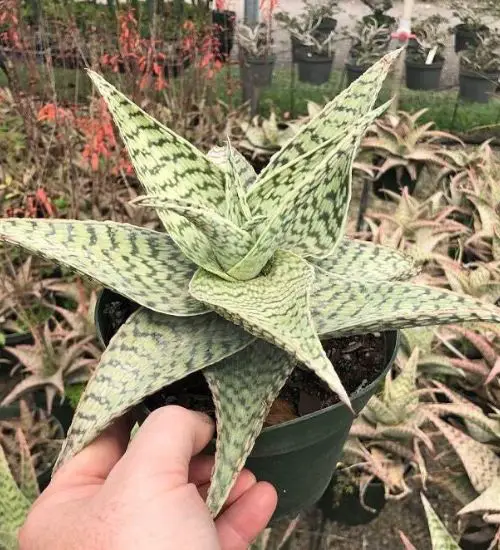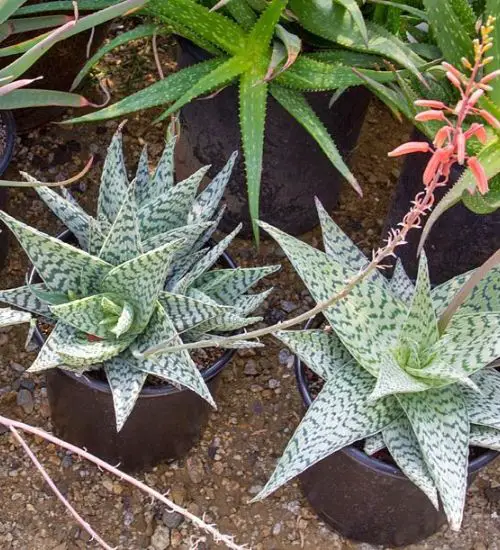Sun: Full sun to light shade
Water: Below average watering needs for a succulent
Temperature: Zone 10a from 30° F to 35° F (-1.1 ° C to 1.7° C)
Winter Survival: Not cold hardy
Propagation: stem cuttings, seeds
Flower: in the Fall
Flower Type: Orange
Toxic: Generally non-toxic to humans but can be toxic to animals.
Dormant: summer
Space Requirement: Indoors & Outdoors
Common Problems: No major pests, Plants may rot if overwatered
Where to buy Aloe Delta Lights?
Basc Care for Aloe Delta Lights
Watering
Can you water your succulent more than what its need? The answer is yes and no. In extreme conditions, you can water your plants more often when you notice the soil is completely dry.
One simple tip for you is that you can use some online apps to check the soil status before you go water your succulents. I would recommend the ThePlantsCheck app, it has some nice features there.
Fertilizing
Only feed this succulent during its active growing seasons which means no information. Use the right fertilizer applied in the right amounts. Applying half-strength balanced fertilizer every month or so is recommended for optimal results.
Do not fertilize during summer as the plant is dormant.
Sun & Location Requirements for "Aloe Delta Lights"
To ensure Aloe Delta Lights is healthy and thriving, make sure it gets full sun to light shade daily. Look for a spot that gets around 6 hours of direct sunlight each day, with a maximum of 5 hours of shade. This will help your succulent reach its full potential!
As per this succulent profile, it is only able to stay healthy when the environment temperature is above the range of zone 10a from 30° F to 35° F (-1.1 ° C to 1.7° C).
Aloe Delta Lights is not cold hardy and does not survive in freezing conditions. However, there are certain strategies that can be used to help the plant thrive despite the chill of winter. Proper drainage and insulation are essential for succulent X during periods of extreme cold. Placing a layer of mulch or gravel on the soil around the plant can also help keep it warm.
Any succulents in the group will need a medium space to grow. You can place your pot at your table or window. Since this plant needs more space than mini succulents, you should consider do not plant them together with other succulents/plants.
Aloe Delta Lights also benefits from some indirect light throughout the day as well, so make sure you give it enough space to soak up light without becoming too exposed to heat.
Propagation
Successfully propagating succulents is a great way to increase your collection of these unique houseplants. To propagate Aloe Delta Lights by stem cuttings, you’ll need a few supplies including a sharp, clean knife and soil.
Propagating Aloe Delta Lights from seeds is a great way to produce new plants without relying on cuttings or divisions. It's important to look for healthy, dark and plump seeds that are slightly sticky when touched. The soil should be pre-mixed with well-draining potting mix, before evenly sowing the seeds and pressing them into the surface. To ensure successful germination, gentle misting of the soil should be done and placed in indirect light.
Toxicity

Although Aloe Delta Lights is generally not toxic to humans, the saponins found in its leaves can be dangerous for animals if ingested. For this reason, it’s best to keep pets away from these plants and make sure they are out of reach.
Pests and Diseases
Aloe Delta Lights is not affected too much by common pests and diseases like most of the other succulents.
It may get attacked by %pest_names%. To prevent this from happening, keep your succulent in a well-ventilated area and check it regularly for any signs of pests or health problems. If you do spot any, treat the plant using below methods.
%pest_treatment_methods%


